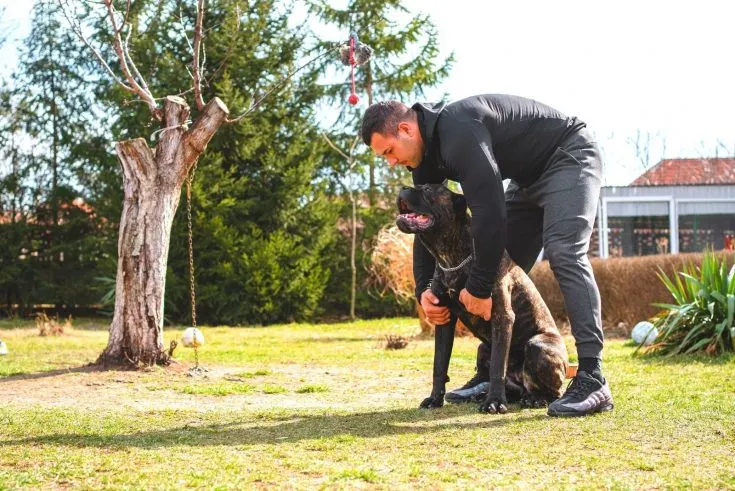
Any owner should be able to witness a seizure or fit as it is extremely alarming. It’s heartbreaking to see your fur-friend in distress.
Seizures are characterized by the dog falling to the ground, often on their side. They are unable to see their surroundings and lose consciousness. The dog also loses consciousness and is unable to control his muscles. This is due to the brain sending a series of bizarre instructions.
But things don’t always go as planned. It could be that the dog is trying to fake a seizure by appearing to have a fit.
This is unlikely for many reasons, which are explained below. It’s more likely, however, that you are not actually experiencing a fit. Instead, you may be witnessing a faint or other medical event that doesn’t have a neurological cause (such as a seizure).
Signs a Dog is Faking a Seizure
The signs of a seizure, whether they are real or faked, can be dramatic and alarming.
Seizures most often occur after a period in which the dog has been resting. This is why so many dogs have seizures at night or while their owners are out. Extreme stress, whether it is psychological or physiological, can cause seizures.

A seizure typically lasts between 2 and 4 minutes. However, it can seem longer if you are the owner who is watching helplessly. The latter is not true. You should make sure your dog is safe, and then video the entire episode. It allows the vet to see the episode firsthand and gain valuable information about whether it is a seizure, or another non-brain-related problem, such as a faint.
During a seizure, the dog will:
- Pay attention to their surroundings
- Unable to stand
- Their side will collapse
- As if they were swimming, paddle with their legs.
- Use juddering and shaking movements
- Salivate heavily
- As if they were chewing, work their mouths.
- Incapable to control their bladder or bowel, and therefore, they soil themselves.
History of Dogs Faking Seizures
Fits or seizures are alarming to witness. In previous centuries they were even linked to the occult and the sufferer being possessed by the devil. Fortunately, with the window modern science gives on the world, and MRI scans of the brain, we now know that seizures are down to abnormal electrical activity in the brain.
As scientific knowledge has advanced, it is now clear that seizures can be a sign of an underlying condition, particularly in the 20th Century.

High toxin levels can cause seizures in dogs with liver disease or blood vessels that shunt blood past the liver. A vet will screen a dog if they have frequent fits. The vet can diagnose epilepsy only if all tests are positive or normal.
Some events, which may appear to be a normal fit, can actually lead to a complete collapse. This could be caused by heart disease and the lack of oxygen in the blood, low blood sugar, respiratory disease or myelopathies, which can cause sudden, catastrophic muscle weakness.
Dogs can’t fake seizures so it’s fair to say that they can have what appears like a fit… but it’s not!
Science of a Dog Faking Seizures
Dogs are intelligent and can readily learn to fake a number of conditions, including lameness and sneezing. Dogs learn through reward-based training, which works by marking the action you want the dog to fake (such as sneezing) with praise and then giving a reward.

This depends on the dog offering to do the behavior voluntarily first so you have something to reward and mark. You can encourage your dog to stand with a limp by teaching them how to mark and reward it. The problem with teaching a dog to hold their paw and mark the surroundings with a seizure is that they may not be aware of it.
A fit is when the dog becomes unconscious and doesn’t know what’s going on. It is impossible to mark action and set it on cue because it is unconscious. Dogs cannot fake seizures because they can’t be taught.
How to train a dog to fake a seizure
The closest an owner can get to teaching a dog to seizure, is to train them to “Play dead”. This involves the dog flopping over on their side and going limp.
Break down the trick into smaller parts to do this. Basic commands like “Down” or “Stay” will be required for your dog to understand. Start by teaching your dog basic commands like “Down” and “Stay”. Once they are proficient at these commands, you can move on to more advanced commands.
Use a treat to get the dog to roll over onto their back and lie on its side. To help the dog relax, stroke their belly and say “Sleep”. Once the dog is relaxed, you can say “Yes!” Give them a treat and speak happy to relax.
When the dog is lying down on its side in a relaxed manner, wait for them to wait before you give the treat. This is done to increase the time that the dog stays still. Slowly stand up and distance yourself from the dog after they have remained still for at least a minute. Now, gently return to your dog’s side and praise them.
The dog will eventually understand what action you are asking them to take when you say “Sleep”. They will roll over on their back and lie down.